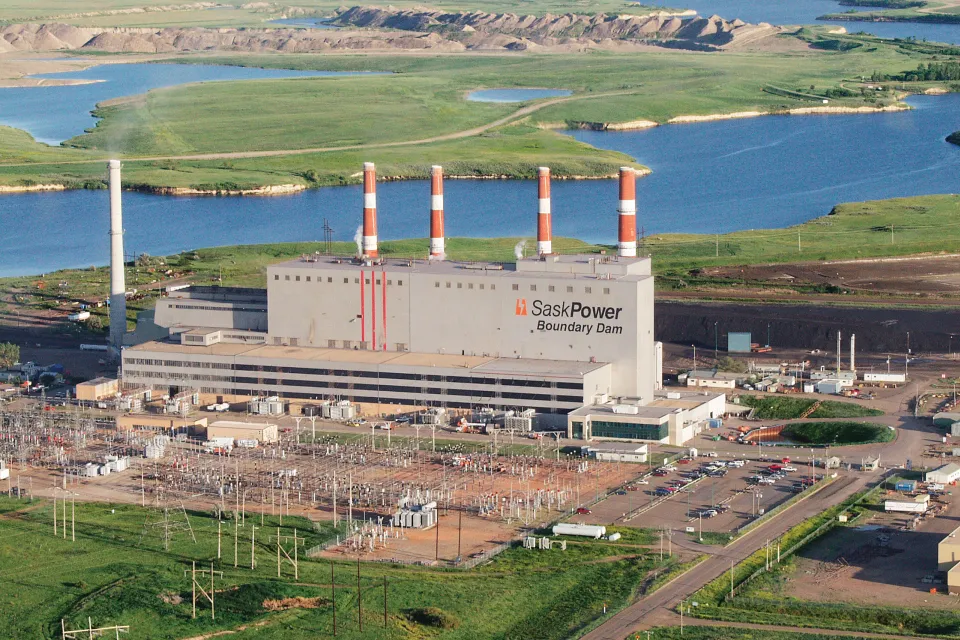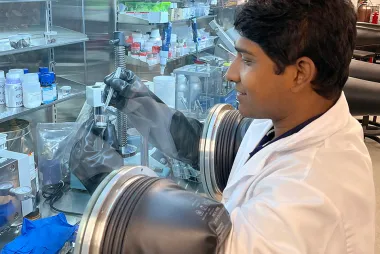Why carbon capture and storage is key to avoiding the worst effects of the climate emergency

Late last month, the Government of Canada announced a bold new climate strategy. The 2030 Emissions Reduction Plan includes $9.1 billion in new investments that "[reflect] economy-wide measures such as carbon pricing and clean fuels, while also targeting actions sector by sector ranging from buildings to vehicles to industry and agriculture."
With the goal of cutting carbon emissions by 40 to 45 per cent of 2005 levels by 2030, the federal plan highlights, among other things, the need to help industries develop and adopt clean technologies. These include carbon capture, utilization and storage (CCUS) technologies, which will be the subject of a forthcoming investment tax credit.
In an article recently published The Conversation, UBC chemical and biological engineering professor Dr. Naoko Ellis offers an incisive look at CCUS: what they are, how they have been unfairly criticized — and why they are technologies "we can't ignore" in the ongoing fight against global warming. The piece is reproduced below.
With the ongoing climate emergency and nations’ commitments to meet net-zero goals by 2050, there’s a heightened need to significantly reduce greenhouse gas emissions through whatever means possible. Carbon capture and storage (CCS) or carbon capture, utilization and sequestration (CCUS) are included in the mitigation pathways set out by the Intergovernmental Panel on Climate Change.
Despite this, carbon capture technologies have been labelled as a distraction from supporting renewable energies and as extending the life of the oil and gas industry. But CCUS is a technology we cannot ignore.
CCUS are technologies that concentrate carbon dioxide from various streams, including combustion stacks, industrial processes and air, and either make use of the carbon dioxide or store it away. I research the technical development of carbon capture and previously oversaw the innovation around CCUS through Carbon Management Canada, and have come to understand these technologies.
The climate emergency is a complex problem
Mitigation — finding ways to avoid the worst effects of the climate emergency — is a hugely complex problem. The problem itself is multifaceted, value-laden and carries uncertainty. There is no silver bullet.
Complexity science — a research approach that studies the interconnectedness of dynamic systems — tells us that in order to deal with complex problems, we need to apply non-linear thinking (draw connections from multiple concepts) and be adaptive and learn. Given the urgent need to decarbonize, we need renewable energy sources to replace fossil fuels to produce electricity. But this will take time, and it is here, through this transition period, that CCUS can provide a much-needed technical solution.
We also need CCUS to decarbonize heavy industries such as cement and steel, which account for about 10 per cent of greenhouse gas emissions in Canada. Using renewable energy won’t affect their emissions much because carbon dioxide is released from the material used in the process, and not through combustion. CCUS technologies can be a strong part of the arsenal to accelerate the decarbonization of industries.
Time matters in the race to decarbonization. Fortunately, CCUS technologies are no longer a curiosity or experimental, but are ready or nearly ready to be exploited.

Canada has successfully demonstrated CCS at Boundary Dam, a coal-fired power station near Estevan, Sask. The technology is based on a liquid that absorbs carbon dioxide from emissions and lets the other gases through, and then releases pure carbon dioxide into another stream, allowing it to be captured and stored.
Over the past seven years, this demonstration project — the world’s first — has provided much information about capturing carbon dioxide from a coal-power plant, and has become a benchmark for technology developers. Researchers like myself learned that a liquid sorbent (the substance that absorbs the carbon dioxide molecules) requires large amounts of energy for regeneration (compared to solid sorbents) and degrades over time, releasing toxic chemicals.
Identifying challenges like these — and proposing solutions — is how technological breakthroughs evolve. This project also demonstrated how carbon dioxide can be safely stored in geological formations and how technology can be used to monitor that containment.
Encouraging innovations
The small CCUS steps taken almost a decade ago are now being followed by a flurry of innovative technologies whose commercial deployment can be measured in months or in a few years.
For example, Svante is developing a carbon capture technology using structured solid sorbent to bind carbon dioxide. The solid sorbent is placed in a rotating column that captures diluted carbon dioxide from flue gas and releases concentrated carbon dioxide when it’s exposed to steam. Svante is currently scaling its operations and working with hard-to-abate industrial emissions — such as in cement and steel industries.

Marketed as an industrial lung, CO₂ solutions Inc. is also developing carbon capture technology using a naturally occurring enzyme to capture carbon dioxide from flue streams and provide pure carbon dioxide stream as chemical feedstock for building material and fuels.
These are just a couple, from a large number of examples of CCUS innovations being developed and commercialized by start-ups and small-to-medium enterprises all over the world. Yet the perception of CCUS technologies continues to be that they are high-risk and too costly.
We need commitment and will
The cost of carbon capture reflects the capital cost of building the system, concentrating the incoming carbon dioxide stream and providing the energy required to purify the carbon dioxide stream. As technologies develop and more versions are adopted, the cost of carbon dioxide capture and conversion will decrease.
However, they will remain costly even with the best of scenarios. If we want to add value to carbon dioxide, thermodynamics tell us that it will inevitably require energy — and energy has a cost.
Just as we, as a society, have come to accept paying for the proper handling of our solid wastes, industry must accept paying for the proper handling of its carbon dioxide emissions. Clearly, we can no longer expect to limit the global temperature rise to 1.5 C without considerable commitment of funds and political will.
Critics may say that we are gambling with unproven technologies, but many of these technologies are far from unproven. Yes, many are being challenged through their scale-up, but this is typical of any new technology in any industry. We shouldn’t paint CCUS with a large brush stroke, but rather understand these technologies with granularity and in context.
There are many industrial emissions, such as lime kiln in the cement and pulp and paper industries, that require carbon dioxide capture from their processes. Just as we need to consider alternative fuel sources for transportation, heating and others, we need to look at industrial emissions in various sectors in context.
Demonstration projects allow us to continuously learn about how technologies improve, how the social systems react and adjust to changes, and how to change policies. At this point, we no longer have the luxury of finding the best solution that addresses such a complex problem as the climate emergency.
Instead, we need to deploy some technologies based on our best judgement, learn from the cases and improve our understanding and technologies. We need to embrace some carefully chosen CCUS technologies and try to reduce emissions quickly, while we continue to develop and improve them and as we continue to deploy renewable energy sources.
Canada has contributed to CCUS through research and innovation, and demonstrated a few successful CCUS projects. With our commitment to place a price on carbon, we have a greater chance at succeeding in applying CCUS technologies to decarbonize our activities. We have now entered the all-hands-on-deck phase to quickly mitigate the devastating effects of the climate emergency. Let’s shift the narrative on CCUS and reduce carbon emissions with all the available tools.
This article is republished from The Conversation under a Creative Commons license. Read the original article.



